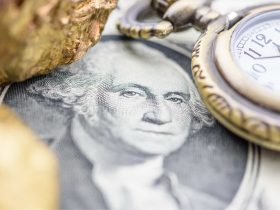It’s been a busy summer for air travel—and delays. Pandemic 2020 excepted, summer flight delays have been ticking up in recent years. Between this May 1 and Aug. 29, some 24% of flights to, from, or within the U.S. were delayed, says flight-tracker FlightAware. The average delay: 55 minutes, up from 52 minutes in 2022. A “delayed” flight misses its scheduled arrival by 15 minutes or more.
Based on FlightAware data,
Delta Air Lines
is the most punctual major airline this year, with 20% of its flights delayed, followed by
Alaska Air
with 21%.
American Airlines
(hit by a record $4.1 million fine this past week for keeping passengers in planes on the tarmac for over three hours) is third with 25%, followed by
United Air Lines
and
Southwest Airlines,
both at 26%.
| Rank | Airport by Origin | Number of Cancellations | Percentage Delays |
|---|---|---|---|
| 1 | Tampa International | 9 | 12% |
| 2 | Newark Liberty | 7 | 14 |
| 3 | Chicago O’Hare | 6 | 15 |
| 4 | Charlotte Douglas | 5 | 32 |
| 5 | Dallas-Ft. Worth | 5 | 17 |
Source: FlightAware
Trailing the pack,
Frontier Group
saw 35% of flights delayed,
JetBlue Airways
33%, and
Spirit Airlines
32%.
Southwest began 2023 with a holiday travel meltdown and took a $325 million revenue hit in the first quarter. The airline then implemented an action plan, and completed more than 99% of flights in the second quarter, which it said was its best performance in the past 10 years.
Delays are annoying, but it was airfares and fees that caused passenger satisfaction to fall for a second consecutive year, says J.D. Power. So here’s the good news: Airline fares fell 8.1% in July from June, the fourth consecutive monthly decline, and 18.6% lower than a year earlier.
Write to Callum Keown at callum.keown@barrons.com
Last Week
Markets
Stocks fell again in China, China
Evergrande
lost 80% of its value, Country Garden requested a delay on a debt payment, and manufacturing shrank for the sixth straight month. In response, China’s central bank finally moved to cut mortgage rates and provide support for the yuan. In the U.S., job openings and consumer confidence fell in July, but consumer spending rose and core inflation slowed. August Job growth also slowed, stifling rate-hike fears. Stocks had a good week, as the
Dow Jones Industrial Average
rose 1.4%, the
S&P 500
2.5%, and the
Nasdaq Composite
3.3%.
Companies
3M agreed to a $6 billion settlement with 250,000 veterans, who said the company’s combat earplugs failed to protect them. A federal court told the Securities and Exchange Commission to reconsider
Grayscale Bitcoin Trust’s
request to form a Bitcoin exchange-traded fund.
Toyota
shut down assembly lines at 14 facilities after a computer-processing system broke down.
UBS
reported record quarterly earnings of $29 billion.
Deals
Goldman Sachs
said it would sell its investment advisory business to Creative Planning for $29 billion. The unit was part of its $750 million acquisition of United Group four years ago…Danaher agreed to pay $5.7 billion for protein and antibody maker
Abcam,
which was under pressure from Abcam’s founder and Starboard Value…The Financial Times reported that hedge fund Millennium Management had a $320 billion short on Carlos Slim’s telecom
America Movil.
Write to Robert Teitelman at bob.teitelman@dowjones.com
Next Week
Monday 9/4
Equity and fixed-income markets are closed in observance of Labor Day.
Wednesday 9/6
Danaher hosts an investor day to discuss Veralto, the spinoff of Danaher’s environmental and applied solutions segment. Danaher expects to complete the spinoff on Sept. 30, with stockholders receiving one share of Veralto for every three shares of Danaher owned.
The Institute for Supply Management releases its Services Purchasing Managers’ Index for August. Consensus estimate is for a 52.4 reading, roughly even with the July data. The Services
PMI
has had only one reading below the expansionary level of 50 over the past three years, as the services sector continues to hold up better than the manufacturing sector.
Friday 9/8
The Federal Reserve releases the Financial Accounts of the United States for the second quarter, which includes statistics for total household net worth. That figure was $148.8 trillion at the end of the first quarter. With the S&P 500 index returning 8.7% in the second quarter, the peak of $152.5 trillion reached in the first quarter of 2022 is well within sight.
Email: editors@barrons.com
Read the full article here













Leave a Reply